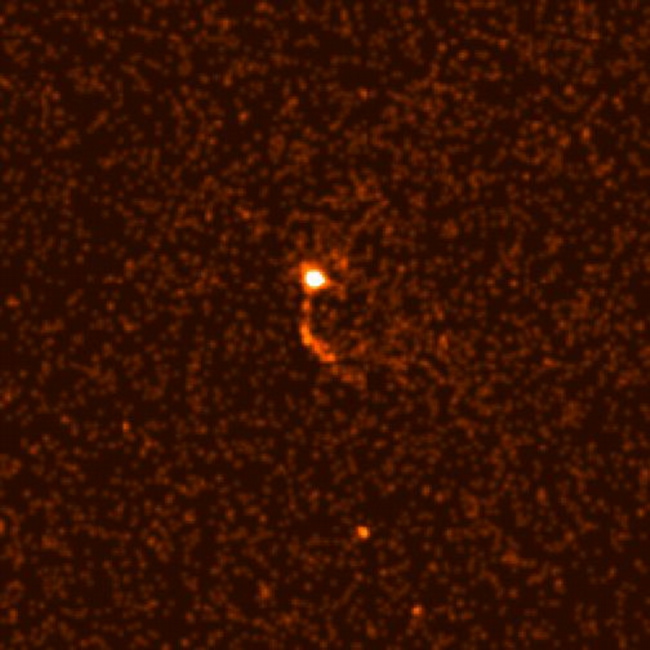
 Credit: J. P. Halpern et al./NASA
Credit: J. P. Halpern et al./NASA
Where Do Pulsars Get Their Kicks?
Neutron stars are born in turmoil. They form under explosive circumstances as a dying star collapses. But how does the collapse really take place? One way to tell is to see what happens to the remnant neutron star, to see how quickly the star moves and in what direction. If the collapse was exactly equal all around, then the neutron star should be born with no net velocity in any direction. But of course nothing is exactly equal, and neutron stars typically fly through space with fairly large velocities. However, one additional complication are jets, like the one shown in the Chandra X-ray Observatory image above. This image shows a rapidly spinning neutron star (or pulsar) at the center of a supernova remnant called CTA 1. The pulsar is the bright source in the middle of the image, and Chandra clearly shows a bent X-ray jet trailing off the neutron star. This jet, powered by the rotation of the neutron star, could help power the neutron star through space.
Last Week *
HEA Dictionary * Archive
* Search HEAPOW
* Education
Each week the HEASARC
brings you new, exciting and beautiful images from X-ray and Gamma ray
astronomy. Check back each week and be sure to check out the HEAPOW archive!
Page Author: Dr. Michael F. Corcoran
Last modified Monday, 26-Feb-2024 17:21:05 EST


